Central and peripheral mechanisms underlying gastric distention inhibitory reflex responses in hypercapnic-acidotic rats
- PMID: 21217073
- PMCID: PMC3064299
- DOI: 10.1152/ajpheart.01131.2010
Central and peripheral mechanisms underlying gastric distention inhibitory reflex responses in hypercapnic-acidotic rats
Abstract
We have observed that in chloralose-anesthetized animals, gastric distension (GD) typically increases blood pressure (BP) under normoxic normocapnic conditions. However, we recently noted repeatable decreases in BP and heart rate (HR) in hypercapnic-acidotic rats in response to GD. The neural pathways, central processing, and autonomic effector mechanisms involved in this cardiovascular reflex response are unknown. We hypothesized that GD-induced decrease in BP and HR reflex responses are mediated during both withdrawal of sympathetic tone and increased parasympathetic activity, involving the rostral (rVLM) and caudal ventrolateral medulla (cVLM) and the nucleus ambiguus (NA). Rats anesthetized with ketamine and xylazine or α-chloralose were ventilated and monitored for HR and BP changes. The extent of cardiovascular inhibition was related to the extent of hypercapnia and acidosis. Repeated GD with both anesthetics induced consistent falls in BP and HR. The hemodynamic inhibitory response was reduced after blockade of the celiac ganglia or the intraabdominal vagal nerves with lidocaine, suggesting that the decreased BP and HR responses were mediated by both sympathetic and parasympathetic afferents. Blockade of the NA decreased the bradycardia response. Microinjection of kainic acid into the cVLM reduced the inhibitory BP response, whereas depolarization blockade of the rVLM decreased both BP and HR inhibitory responses. Blockade of GABA(A) receptors in the rVLM also reduced the BP and HR reflex responses. Atropine methyl bromide completely blocked the reflex bradycardia, and atenolol blocked the negative chronotropic response. Finally, α(1)-adrenergic blockade with prazosin reversed the depressor. Thus, in the setting of hypercapnic-acidosis, a sympathoinhibitory cardiovascular response is mediated, in part, by splanchnic nerves and is processed through the rVLM and cVLM. Additionally, a vagal excitatory reflex, which involves the NA, facilitates the GD-induced decreases in BP and HR responses. Efferent chronotropic responses involve both increased parasympathetic and reduced sympathetic activity, whereas the decrease in BP is mediated by reduced α-adrenergic tone.
Figures

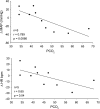
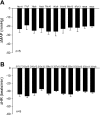
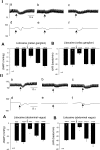
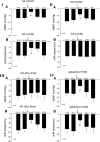
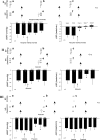

References
-
- Abdelrahman A, Tabrizchi R, Pang CC. Effects of β1- and β2-adrenergic stimulation on hemodynamics in the anesthetized rat. J Cardiovasc Pharmacol 15: 720–728, 1990 - PubMed
-
- Baird J, Travers J, Travers S. Parametric analysis of gastric distention responses in the parabrachial nucleus. Am J Physiol Regul Integr Comp Physiol 281: R1568–R1580, 2001 - PubMed
-
- Bernards J, Dejours P, Lacaisse A. Ventilatory effects in man of breathing successively CO2-free, CO2-enriched and CO2-free gas mixtures with low, normal or high oxygen concentration. Respir Physiol 1: 390–397, 1966 - PubMed
-
- Cherniack N, Edelman N, Lahiri S. Hypoxia and hypercapnia as respiratory stimulants and depressants. Respir Physiol 11: 113–126, 1970 - PubMed
-
- Crisostomo M, Li P, Tjen-A-Looi SC, Longhurst JC. Nociceptin in rVLM mediates electroacupuncture inhibition of cardiovascular reflex excitatory response in rats. J Appl Physiol 98: 2056–2063, 2005 - PubMed
Publication types
MeSH terms
Substances
Grants and funding
LinkOut - more resources
Full Text Sources

